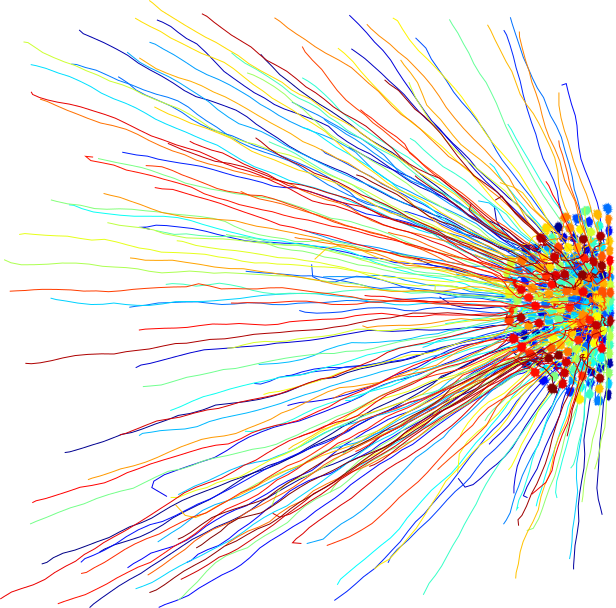High-density crowds
Currently, my research focusses on high-density crowds and their motion. I use mathematical modelling and take inspiration from diverse fields of physics – theoretical physics, condensed matter, granular media, active matter, complex networks – to develop new methods to understand, predict, and prevent the emergence of crowd disasters. [Know more!]
Complex networks and transportation systems
I am interested in the evolution of complex networks and in the optimization of transport systems modelled in the framework of spatial networks. I have worked on protein-protein interaction networks, ant trail networks, and I am currently studying the evolution of the French national railway system. A fundamental property common to these (sometimes very different) networks is that they evolve in time. Thus, a common underlying question is how local and decentralised rules of evolution lead to large-scale properties and optimization.
To answer this question I blend mathematical models and numerical simulations with concepts from network theory, non-equilibrium physics, and statistical mechanics.
I started working with networks for my master thesis in theoretical physics. I developed and studied analytically and numerically a growth model for the network describing the physical interactions between proteins that could also explain the experimental data about birth and evolution of different classes of proteins [Download]. During my PhD I resumed network theory to understand self-organization in ant trail networks. Here, the question is how 2 mm ants can build networks spanning hundreds of kilometers that are transport-efficient and resistant to disruptions, but not too expensive to build and maintain. This was a fun data-based modelling project in collaboration with Dr. Latty, an expert in insect ecology at the University of Sydney. [Download][Press]. This project brought inspiration for a more theoretical work where I studied the large-scale and long-term consequences of minimizing building costs versus minimizing maintenance costs [Download]. More recently, I am analyzing the evolution and optimization of the French railway network from 1840 – when railways were legailzed in France – to 2000. Stay tuned!
